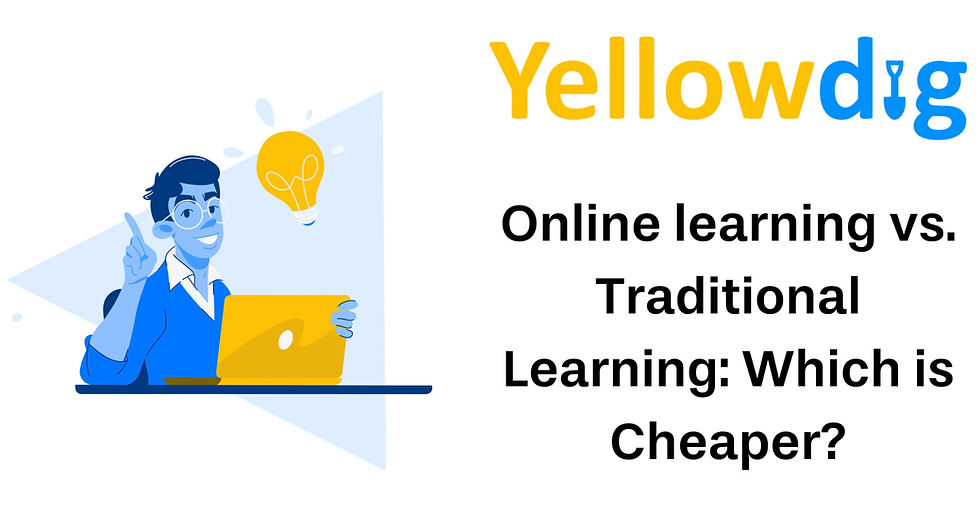Online Learning vs. Traditional Learning: Is Online College Cheaper
- Yellowdig Team

- Feb 25, 2022
- 3 min read
Updated: Sep 20, 2023

Making the decision to enroll at a university can be a daunting task because of the financial burden that higher education places on its students. Students are expected to take out large loans to finance their education right out of high school because a traditional college education costs more than most Americans can afford. In fact, only 17% of American families can afford sending their children to college without borrowing money from the federal government or a private bank. With higher education being a must for many careers, we must evolve the educational landscape to match the financial reality of the majority of Americans.
Luckily, there is one solution to this problem: online education. Because of the lack of inherent costs of the typical brick and mortar education, virtual classes can save learners thousands of dollars on their tuition. Let’s dive into the costs of both a traditional public school and a fully online education to see just how much more money you need to spend attending in-person classes.
Traditional education Vs. Online education

Tuition
Although the tuition per credit hour is comparable between traditional and online education at most colleges and universities, the other costs that incur in a traditional education setting are staggering when compared to an online education. For example, student who attend virtual classes saves money by not worrying about transportation costs. Not only do students who commute to school need to worry about gas money, but they also have to worry about the wear and tear they put on their vehicles. With that being said, living on or near campus could eliminate transportation costs for students if their classes were within walking distance.
Living and food expenses
Other needs and essential services, such as somewhere to live and cost of food, are reduced if not living on campus. The average campus meal plan costs $4,500 a year while groceries average around $3,120 a year per student. Dorms are also more expensive than living in an off-campus apartment. The average dorm costs almost $9,000 a year while an apartment off-campus costs $7,200 a year with a roommate in an apartment that charges $1,200 a month. The cost of an apartment can be even cheaper depending on how many roommates you live with.
Hidden Fees
Students who attend physical classrooms are also charged many hidden fees that online students aren’t responsible for. One common fee students may see in their tuition bill is a “campus fee” which is charged to each student in order to maintain the campus in various ways. This fee can go toward general building maintenance, landscaping, construction maintenance, and more. Rutgers University charges upwards of $1,347 for general campus upkeep for each student attending school on a physical campus while students attending an online school are exempt from these fees.
Cheaper Online Education Allows For More Flexibility
Online education inherently makes learning more flexible for students by giving them more options in when and where they want to learn, but with online programs being cheaper than going to a traditional college, it opens doors to even more flexibility for students. There are many reasons students may consider online vs in-person education. For some students, receiving a high quality education can be difficult depending on where they live. Those in rural areas may have to commute a long distance or unwillingly move away from their hometown in order to attend college. Other students may find that their local university isn’t the right fit for them.
Online courses have changed the game by offering students a way to receive a higher education on their own terms. Because online education is cheaper than going to a physical classroom, students have the opportunity to choose a college from anywhere in the country. In fact, many online universities don’t charge out-of-state tuition.
A Great Solution to an Old Problem
Many people have been barred from a college education since the inception of higher education because of their socioeconomic status, but online education can be the change we need to see in order to rectify this problem. Online education ultimately makes education more accessible, which is exactly what we need in order to ensure receiving a higher education is possible for everyone.




Comments